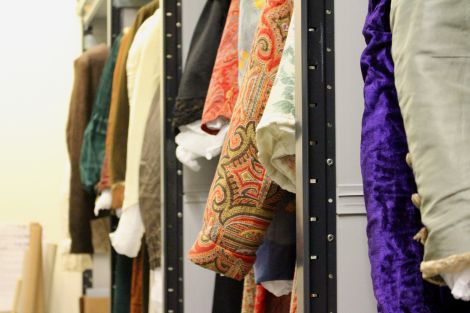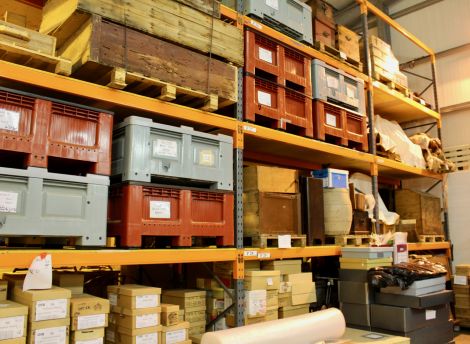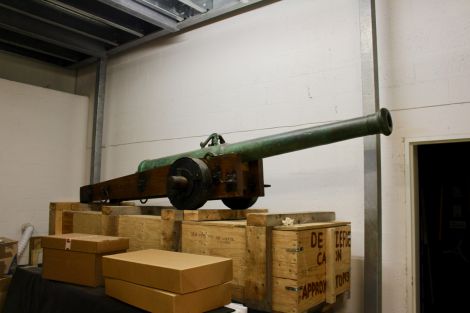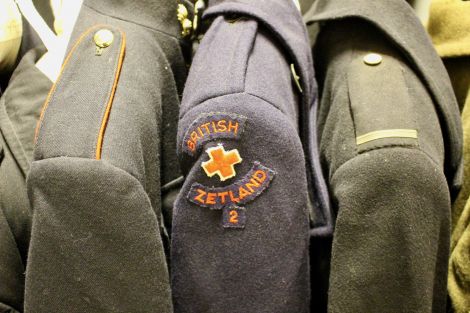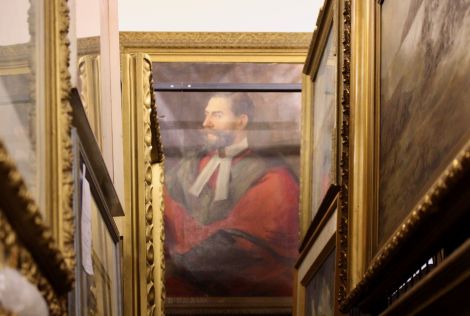Community / ‘Aladdin’s cave’ of museum artefacts runs out of space
NOT everyone will be aware of the large building on the outer reaches of Lerwick that houses a smorgasbord of items ranging from dried plants, model boats and cannons to antiquated clothes, fossils and ancient human remains.
The museum store at Staney Hill has provided space since 1998 for thousands of artefacts and items that are not on display in Shetland.
There are around 186,500 objects in total within the store, although some 165,000 of these are uncatalogued archaeology items, from bone fragments to pieces of pottery.
But it has effectively run out of space, meaning that donations of large items are proving to more and more difficult to take in.
The problem of space is not a new one, but the chief executive of store operator Shetland Amenity Trust says it is “becoming more of an issue of late”, with accessibility and safety two main concerns.
The lack of free space was raised at a meeting of amenity trust trustees on Friday, where chief executive Mat Roberts remarked that the “Tardis-like qualities of the museum store have now been exhausted”.
The store is run by the trust, which also operates the museum at Hay’s Dock, although it is Shetland Islands Council which pays for the service as it owns the items.
Roberts described the store as an “Aladdin’s cave”, and it is a treasure trove which sees researchers from across the globe come by for a visit – particularly for the textiles.
Curator Carol Christiansen oversees the day-to-day running of the store alongside another member of staff, and the building – which is kept locked – can be opened to the public by appointment.
She said around 200 or 300 items are donated on average a year – pieces that are “as small as a button, or as a big as a boat”.
Become a member of Shetland News
“We are constantly juggling people and objects,” Christiansen added.
Items go through something of a quarantine process when they are taken in, with this week a rug stored in a large freezer to make sure no bugs came along with it.
The building has dehumidifiers running around the clock to keep all of the pieces in the best condition possible.
The main store room, spread across two floors, features neatly tucked away storage racks that can be easily accessed.
They feature just about everything you can think of: plane wreck materials, old Shetland milk bottles, whaling equipment, model boats, doll houses, archaeological finds.
Larger items like furniture are somewhat less easy to reach, towering towards the roof on a metal storage block.
There are also rooms dedicated to artwork, clothes and even antique weapons – with the latter locked for extra safety.
The lack of space, however, becomes evident when items have to be stored on top of racks, dangerously high up.
“If you turn up with a relatively small item it can accommodate that, if you turn up with a Welsh dresser or a cannon – that’s a little more difficult,” Roberts said.
“It is being able to provide environmentally controlled storage for paintings, for clothing, for wooden artefacts, artefacts that are photosensitive. It’s quite a specialist space. It’s an Aladdin’s cave, but it’s not big enough, and it hasn’t been big enough for a long time.”
Roberts said the issue of space is being experienced by “every museum in the country” as collections will naturally continue to grow.
“We’re working very closely with the council and we’re both equally committed to resolving it,” he added.
“We’re not discouraging donations to the collection. If anything, we’re encouraging donations to the collection. The collection is constantly growing. Most of what we get donated is quite small, so we can accommodate it, but it’s being able to make it accessible to people, is the challenge.
“If you want to make it accessible to people, you need to catalogue it, you need to get at it easily and quickly.”
There is a hope that less items will need to be made accessible if plans to digitise the collection come to fruition, but with each piece needing photographed and catalogued, it will be a lengthy process.
Items still keep on coming though, with 140 stuffed birds previously housed at the old Anderson High School donated recently – although there will be a rigorous process to make sure they are environmentally suitable.
Around 55,000 land archaeology objects from excavations are also due in the next few years.
Christiansen, meanwhile, also acts as a community museums officer, helping rural museums in Shetland such as the Tangwick Haa in Eshaness or the Unst Heritage Centre.
The council’s lease on the building runs out in 2023 and an SIC property strategy – which is yet to be approved by councillors – recommends that the local authority does not extend it as the building is “no longer fit for purpose”.
It also recommends that a business case is established to prepare for its replacement ready for occupation no later than 2023.
Neil Grant, director of the council’s development services, said: “We’re aware of the pressures of space at the Staney Hill building.
“The Amenity Trust does hold a service level agreement with the council to properly store artefacts, and the council is currently looking at all its options to support the trust in that.”
Become a member of Shetland News
Shetland News is asking its many readers to consider paying for membership to get additional features and services: -
- Remove non-local ads;
- Bookmark posts to read later;
- Exclusive curated weekly newsletter;
- Hide membership messages;
- Comments open for discussion.
If you appreciate what we do and feel strongly about impartial local journalism, then please become a member of Shetland News by either making a single payment, or setting up a monthly, quarterly or yearly subscription.






